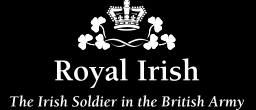1 RIR detachment to the Tibet War.
In 1903, following a situation of many years of frontier violations and diplomatic failures, plus British assertions that Russia could threaten British India through Tibet, the British administration in India authorised an expedition that would be led by the British 'Commissioner to Tibet', Colonel Francis Younghusband from the Indian Political Service. It was based in northern India's Sikkim province. This combined diplomatic and military expedition aimed to compel the Tibetans to comply with British conditions. The 3,000 strong British Indian Army Force consisting mainly of Gurkha, Pathan and Sikh troops was commanded by Brigadier General Macdonald.
Younghusband responded to an alleged Tibetan border violation and authorised a force of some 1,150 to invade Tibet. Advancing to Tibet's capital (Lhasa) the column was blocked at Guru by a 3-5,000 strong Tibetan force. The Tibetans would neither open fire nor stand aside. Following an altercation between Sikh troops and a Tibetan general's guards, the general fired the first shot. The British response was swift and resulted in at least 700 Tibetan killed within 10 minutes. Their ancient matchlocks were no match for Maxim guns.
 Following continuing Tibetan refusal to negotiate and further fighting, reinforcements arrived from India, including a Machine Gun detachment, commanded by Lt J C Bowen-Colthurst RIR, from the 1st Battalion The Royal Irish Rifles. The advance continued. The Tibetan force twice tried to arrest the column's progress on 28 June and again on 6 July; each time the Tibetans lost several hundred casualties. A third battle started on 14 July at a height of 20,000 feet. In these three skirmishes, the Machine Gun detachment fired 2,097 rounds.
Following continuing Tibetan refusal to negotiate and further fighting, reinforcements arrived from India, including a Machine Gun detachment, commanded by Lt J C Bowen-Colthurst RIR, from the 1st Battalion The Royal Irish Rifles. The advance continued. The Tibetan force twice tried to arrest the column's progress on 28 June and again on 6 July; each time the Tibetans lost several hundred casualties. A third battle started on 14 July at a height of 20,000 feet. In these three skirmishes, the Machine Gun detachment fired 2,097 rounds.
(Above left, Maxim Gun; Lt J C Bowen-Colthurst is on the left. Image ©, RUR Collection)
By 3 August 1904, the expedition had reached Lhasa, the capital. When Colonel Younghusband entered the city, the detachment formed part of his guard. At the signing of the new treaty on 7 September 1904, the detachment was on guard outside Pota-la, the Dalai Lama's Palace. On the return journey from Lhasa, the detachment marched 440 miles to the Indian railhead in 32 days and arrived back in India at the end of October.
The Battalion, back in Fyzabad, took so much interest in the fortunes of the detachment that Lt Bowen-Colthurst's letters to the Commanding Officer were published in Battalion Orders.






